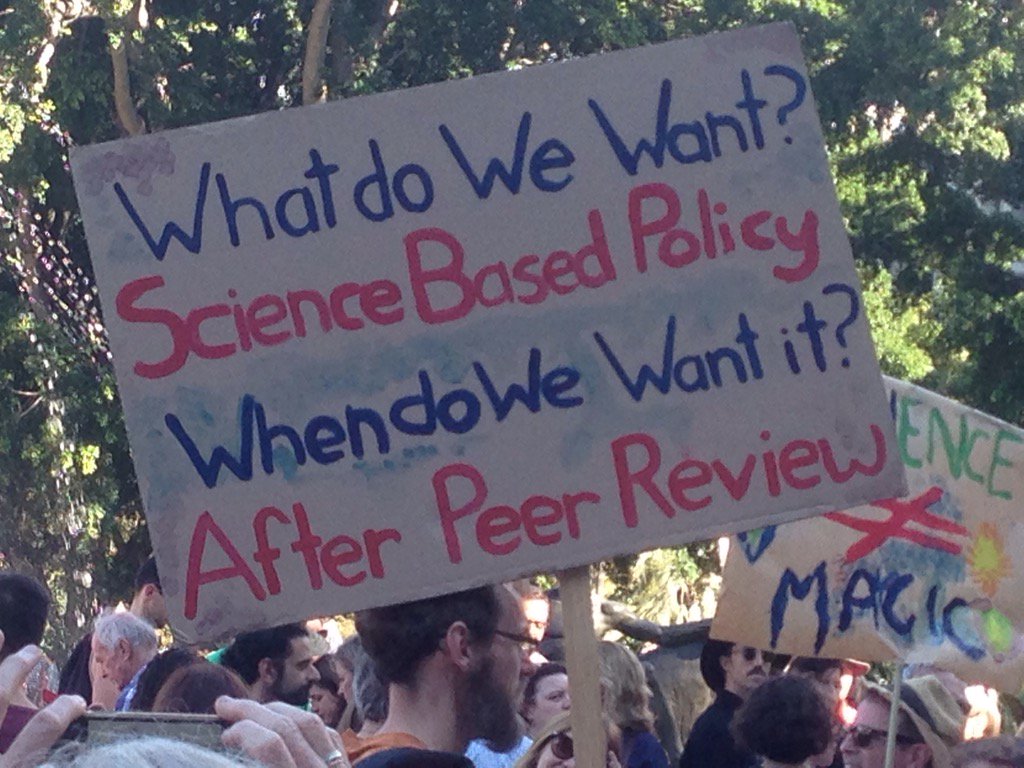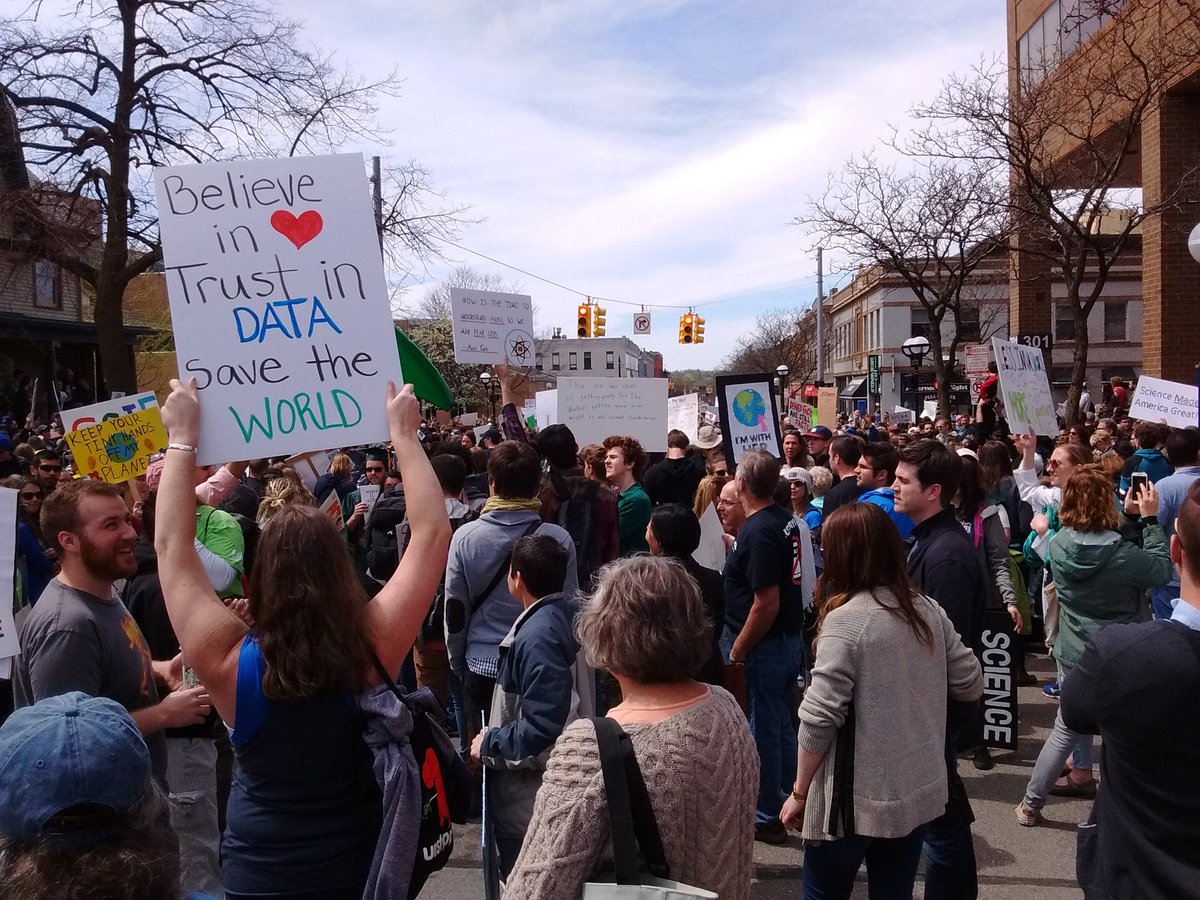Absolutely incredible: @realdonaldtrumo says the Constitution is a "really a bad thing for the country."
https://www.theguardian.com/us-news/2017/apr/29/trump-blames-constitution-for-first-100-days-chaos-presidency?CMP=share_btn_tw
Sunday, April 30, 2017
Significant Quarterly Jump in Ocean Heat Content
The ocean has recovered from its heat loss during last year's El Nino, and is again accumulating heat.
Here are the data: 0-700 m, 0-2000 m.
Over the last quarter, the 0-700 m region of the ocean gained 1.1 W/m2, and the 0-2000 m region gained 1.3 W/m2.
Over 12 months, these regions gained 0.3 W/m2 and 0.5 W/m2, respectively.
Though both these numbers are barely higher than they were 2 years ago, in 1Q2015.
Here are the latest big numbers: anyone who wants to explain global warming via natural factors has to come up with 0.18 W/m2 since 1Q1955 for the 0-700 m region, and 0.65 W/m2 since 1Q2005 for the 0-2000 m region.
That's 180 ZJ and 125 ZJ, respectively.
(1 ZJ = 1 zettajoule = 1021 Joules.)
The first value is how much sunlight (240 W/m2) reaches the surface in 17 days, and the second in 12 days.
Here are the data: 0-700 m, 0-2000 m.
Over the last quarter, the 0-700 m region of the ocean gained 1.1 W/m2, and the 0-2000 m region gained 1.3 W/m2.
Over 12 months, these regions gained 0.3 W/m2 and 0.5 W/m2, respectively.
Though both these numbers are barely higher than they were 2 years ago, in 1Q2015.
Here are the latest big numbers: anyone who wants to explain global warming via natural factors has to come up with 0.18 W/m2 since 1Q1955 for the 0-700 m region, and 0.65 W/m2 since 1Q2005 for the 0-2000 m region.
That's 180 ZJ and 125 ZJ, respectively.
(1 ZJ = 1 zettajoule = 1021 Joules.)
The first value is how much sunlight (240 W/m2) reaches the surface in 17 days, and the second in 12 days.
This Ice Spike Grew in My Freezer in Less than 30 Minutes
Last Year, Green Electricity Cost Me an Extra Nickel a Day
They just sent me my annual statement for 2016. Turns out that this clean power costs me only an extra nickel a day.
In 2016, I used a total of 2,378 kWh -- an average of 198 kWh per month. (The average residential use is 901 kWh/month.) Total cost = $408. To make it green, I paid an extra $19.01, which works out to $0.008/kWh -- an extra 4.9%. Or $0.052 per day.
A nickel a day. $1.59 per month. Which I can easily afford. Who couldn't?
PGE said my purchase of green electricity saved 3,755 lbs of CO2 emissions -- 1.71 metric tons, when the average US per capita emissions is now 16.9 tonnes.
And that this was equivalent to not driving 4,190 miles. (So they're assuming 0.41 kg of CO2 emitted per mile.)
I drove 6,743 miles in 2016 (I keep track for tax purposes, and also personal interest). Avg = 27 mpg. Much of it up to Portland for lacrosse games, volleyball games, soccer games and swim meets. Hey, I'm a great uncle.
I'm also now buying green offsets for my natural gas usage, but I don't have much data yet to report.
Thursday, April 27, 2017
Reagan on Scientific Research
"The remarkable thing is that although basic research does not begin with a particular practical goal, when you look at the results over the years, it ends up being one of the most practical things government does."
-- Ronald Reagan, Radio Address to the Nation, April 2, 1988
Wednesday, April 26, 2017
New Study: Sea level Rise is Accelerating
Sea level rise is up 25% since the 1990s, according to a new paper in GRL, mostly due to melting in Greenland. From an AGU blog:
http://blogs.agu.org/geospace/2017/04/26/sea-level-rising-faster-now-1990s-new-study-shows
From the paper's abstract:
http://blogs.agu.org/geospace/2017/04/26/sea-level-rising-faster-now-1990s-new-study-shows
From the paper's abstract:
The new GMSL [Global Mean Sea Level] rate over January 1993 to December 2015 is now close to 3.0 mm/yr. An important increase of the GMSL rate, of 0.8 mm/yr, is found during the second half of the altimetry era (2004–2015) compared to the 1993–2004 time span, mostly due to Greenland mass loss increase and also to slight increase of all other components of the budget.Here is their final result, after all bias corrections:
which clearly is increasing faster than linear. The paper doesn't actually give a value for the acceleration -- it obviously depends on the times chosen -- but I'll try to estimate it.
They write, "The EM [Ensemble Mean] GMSL rate is significantly lower during the first period compared to the second one (2.7 ± 0.2 mm/yr versus 3.5 ± 0.15 mm/yr)...."
The two observation periods are Jan1993-Dec2004 and Jan2004-Dec2015 (yes, there's a slight overlap; I don't yet know why). Their midpoints differ by 11 years, so the acceleration is about
where "SLR" is Sea Level Rise. This is about what I get from fitting the Aviso-only data to a quadratic, as I did here, which now comes to 0.06 mm/yr2.
--
Added 4:40 pm -- I went ahead and calculated the uncertainty for this acceleration, given the uncertainties in the paper (which are only 1-sigma). The 2-sigma error for the acceleration is quite high, 0.27 mm/yr2.
It's high mostly because the error on the first interval's SLR is high, 13% -- and that's only 1-sigma. I have to read more to figure out why.
Remember, this paper is based only on the 23 years of satellite data.
Saturday, April 22, 2017
Subscribe to:
Posts (Atom)
















































































